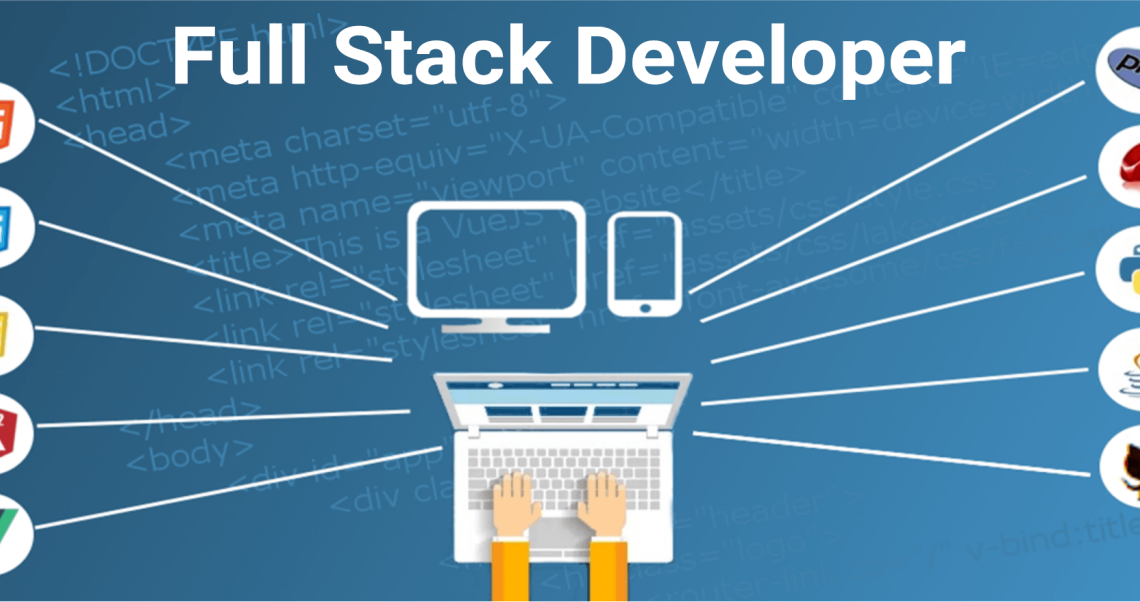
Full stack developers stand out as versatile professionals capable of navigating both front-end and back-end technologies. A fundamental aspect of their expertise lies in their proficiency across a spectrum of programming languages. From crafting engaging user interfaces to managing server-side logic and databases, full stack developers harness a diverse toolkit of languages to bring web applications to life.
Let me tell you programming languages utilized by full stack developers, exploring their roles, advantages, and relevance in today’s rapidly evolving tech landscape. Whether you’re aspiring to join the ranks of full stack developers or seeking insights into the technologies shaping modern web development, join us as we unravel the language of full stack proficiency.
A career in full stack development offers an exciting journey into the heart of modern web development, combining front-end and back-end expertise to build robust and interactive web applications. A full stack developer course equips individuals with a comprehensive understanding of essential programming languages such as HTML, CSS, and JavaScript and frameworks like React and Angular for front-end development.
Additionally, courses cover server-side languages like Node.js, Python, Java and databases such as SQL or NoSQL. By mastering these languages and frameworks, aspiring full stack developers gain the skills to design, develop, and deploy full-fledged web applications, paving the way for rewarding career opportunities in this rapidly evolving sector.
What is a Full Stack Developer?
A full stack developer is a versatile professional proficient in both front-end and back-end development of web applications. They possess expertise in a range of programming languages, frameworks, and technologies required to build and maintain every aspect of a web application, from user interfaces to server-side logic and databases. Full stack developers are adept at handling various development tasks independently or collaboratively, seamlessly bridging the gap between design and implementation. Their comprehensive skill set enables them to create functional, responsive, and scalable web applications that meet the needs of users and businesses alike, making them invaluable assets in the fast-paced world of software development.
Front end
HTML (Hypertext Markup Language): HTML forms the backbone of web pages by providing the structure and content of a webpage. It uses markup tags to define different elements such as headings, paragraphs, images, links, and more. HTML provides the foundation upon which other front-end technologies build, allowing developers to create the layout and organization of a webpage.
CSS (Cascading Style Sheets): CSS is used to style and design the appearance of HTML elements on a webpage. It allows developers to control aspects such as colors, fonts, spacing, layout, and positioning of elements. CSS enables the separation of content from presentation, enhancing the maintainability and flexibility of web pages. With CSS, developers can create visually appealing and responsive designs that adapt to different screen sizes and devices.
JavaScript: JavaScript is a dynamic programming language that adds interactivity and functionality to web pages. It enables developers to create interactive elements, handle user input, manipulate the DOM (Document Object Model), and communicate with servers asynchronously (via AJAX). JavaScript is widely used for tasks such as form validation, animations, event handling, and client-side scripting. It plays a crucial role in creating dynamic and engaging user experiences on the web.
Back end
Python: Python is a versatile and powerful programming language known for its simplicity and readability. It is widely used in web development for building robust back-end systems, web applications, and APIs. Python’s extensive library ecosystem, including frameworks like Django and Flask, simplifies web development tasks and accelerates the creation of scalable and efficient web services.
Java: Java is a popular, object-oriented programming language renowned for its platform independence and robustness. In full stack development, Java is often used to build scalable, enterprise-grade applications, web services, and server-side components. Java’s strong typing, extensive libraries, and frameworks like Spring and Hibernate make it well-suited for developing high-performance back-end systems.
R: R is a specialized programming language primarily used for statistical computing and data analysis. While not as commonly used in full stack development as other languages on this list, R can be employed in back-end tasks such as data processing, analysis, and modeling. Its rich ecosystem of packages and libraries makes it a valuable tool for handling complex data tasks in web applications and services.
Ruby: Ruby is a dynamic, object-oriented programming language known for its simplicity and productivity. It is often used with the Ruby on Rails framework to develop web applications and APIs quickly. Ruby’s elegant syntax and convention-over-configuration philosophy make it popular among full stack developers for building scalable, maintainable, and feature-rich back-end systems.
Node.js: Node.js is a runtime environment that allows developers to execute JavaScript code server-side. It is built on the V8 JavaScript engine and is widely used for building fast, scalable, and real-time applications. Node.js is particularly well-suited for building lightweight, event-driven back-end services, APIs, and microservices. Its non-blocking I/O model and extensive package ecosystem (npm) make it a popular choice for full stack development.
PHP: PHP is a server-side scripting language designed for web development. It is commonly used for building dynamic web pages, server-side scripts, and web applications. PHP powers many popular content management systems (CMS) like WordPress, Drupal, and Joomla, making it a prevalent choice for full stack development. With frameworks like Laravel and Symfony, PHP facilitates rapid development of robust and scalable back-end systems for web applications.
Advantages of Full Stack Development
Complete ownership and understanding of the project: Full stack developers have a holistic view of the entire project, from front-end design to back-end functionality. This comprehensive understanding allows them to take ownership of the project, ensuring consistency and coherence across all components. By deeply understanding client- and server-side aspects, full stack developers can make informed decisions and implement solutions that align with the project’s goals and requirements.
Saves both project time and cost and enhances productivity: Full stack developers can work on multiple aspects of a project without constant handoffs between team members. This streamlined workflow reduces project time and costs by eliminating delays associated with communication and coordination between specialized roles. Additionally, their ability to handle various tasks efficiently enhances overall productivity, enabling projects to be completed more quickly and cost-effectively.
Faster bug fixing due to knowledge of the complete system: Full stack developers comprehensively understand the entire system, including front-end and back-end components. This knowledge allows them to identify and troubleshoot issues more effectively, leading to faster bug fixing and smoother project maintenance. By having insight into how different parts of the system interact, full stack developers can diagnose problems efficiently and implement targeted solutions, minimizing downtime and disruptions.
Easy knowledge transfer to other team members: Full stack developers are well-equipped to communicate and collaborate with team members across different disciplines. Their broad skill set enables them to understand and contribute to various aspects of the project, making knowledge transfer seamless. Whether it’s sharing insights on front-end design principles or explaining back-end architecture decisions, full stack developers can effectively convey information to other team members, fostering collaboration and collective understanding.
Better division of work amongst team members: Full stack developers can adapt to different project requirements and take on diverse tasks as needed. This flexibility allows for a better division of work amongst team members, ensuring that each member contributes their expertise where it’s most needed. Whether it’s focusing on front-end development, back-end programming, or database management, full stack developers can adjust their roles and responsibilities to optimize team efficiency and project outcomes.
Conclusion
Understanding the programming languages utilized by full stack developers is essential for aspiring professionals in the field. Undertaking a full stack developer course provides a structured pathway to mastering these languages, equipping individuals with the skills and knowledge needed to build proficiency. Through hands-on projects, practical exercises, and guided learning, students gain practical experience and insights into each language’s nuances, enabling them to develop robust, end-to-end solutions and embark on successful careers in full stack development.








